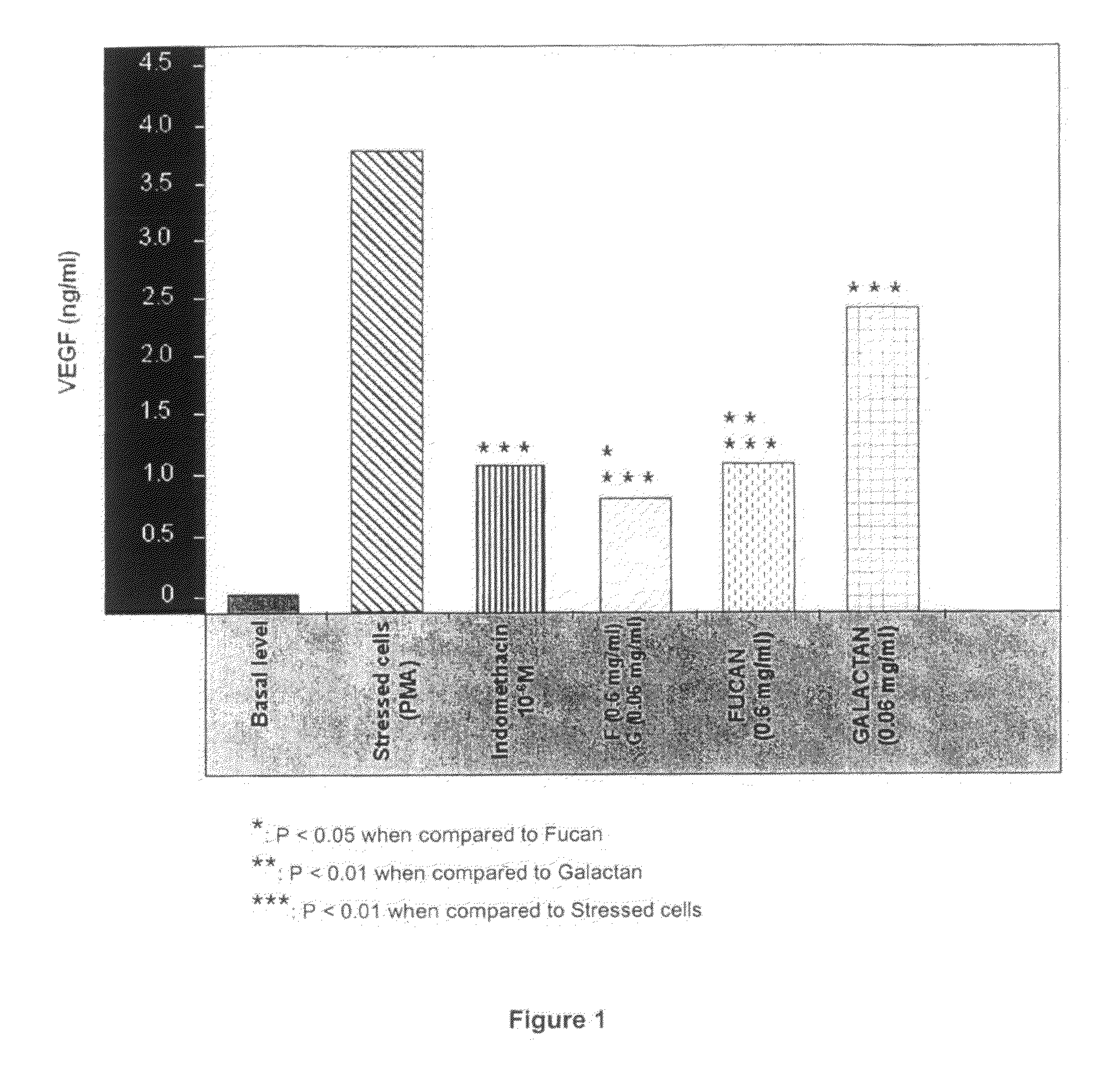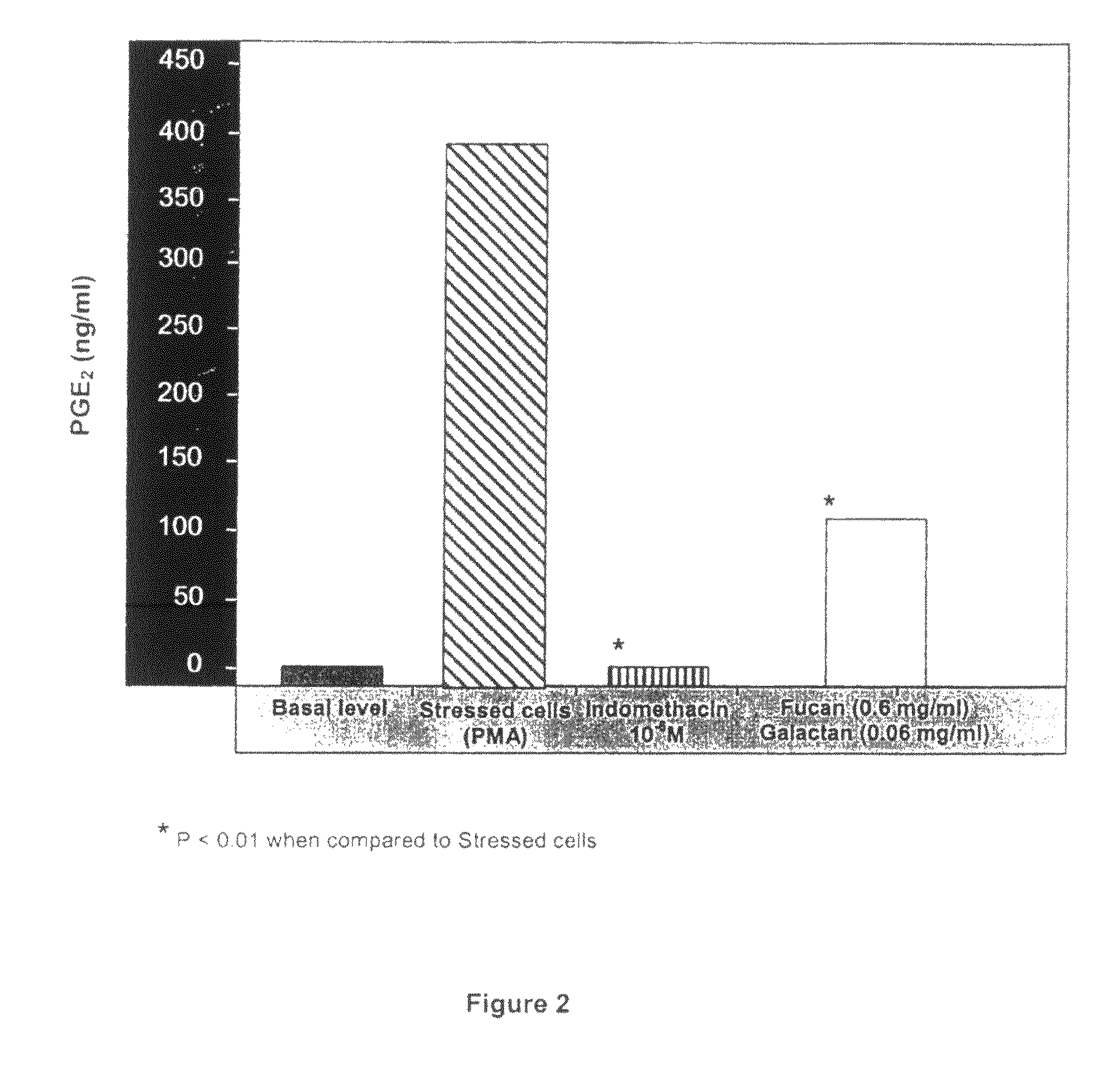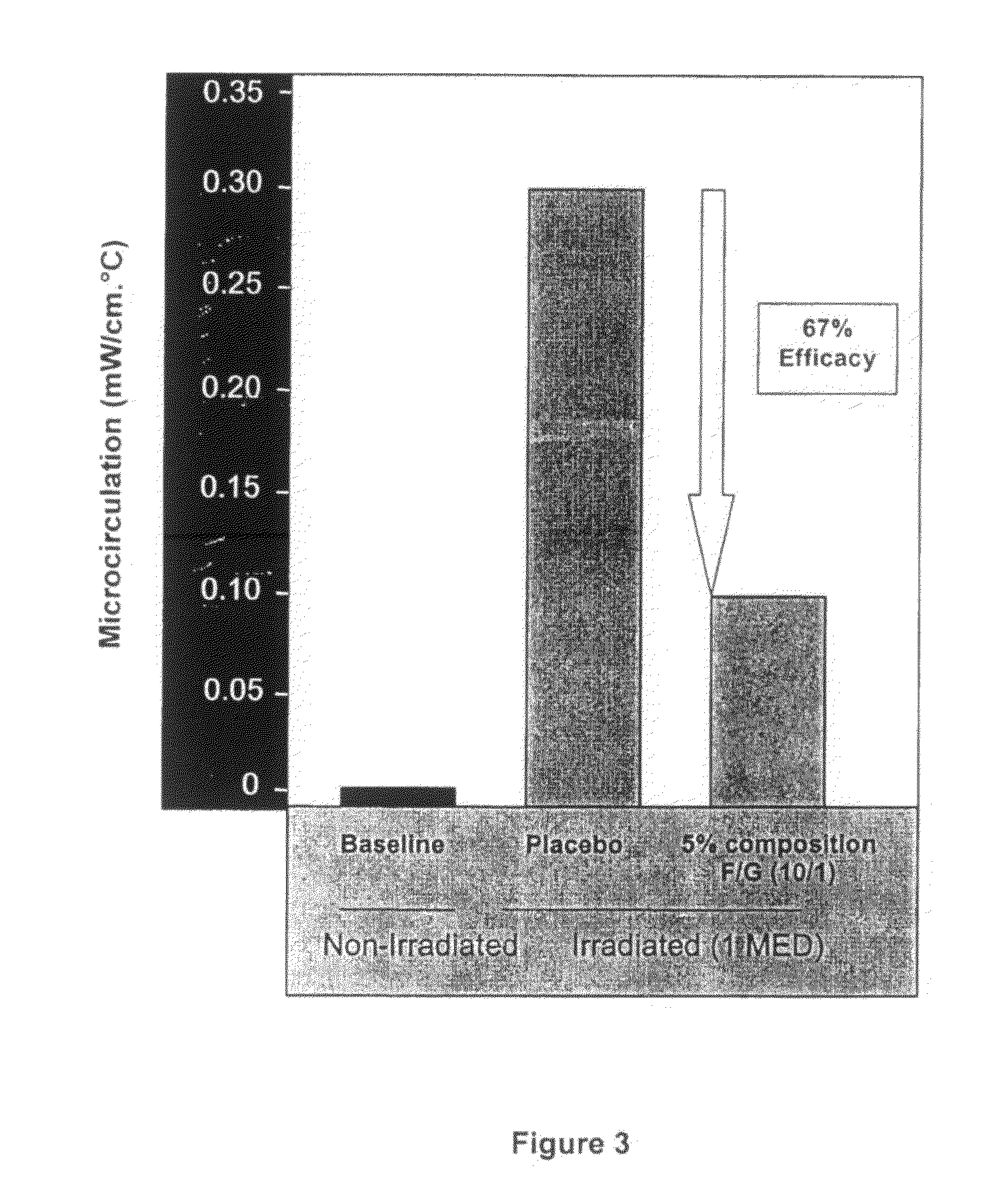Polysaccharides compositions comprising fucans and galactans and their use to reduce extravasation and inflammation
a technology of polysaccharides and compositions, which is applied in the direction of biocide, plant growth regulators, biochemistry apparatus and processes, etc., can solve the problems of affecting skin health and appearance, macroscopic appearance of cutaneous aging, and ecm and its associated structures are vulnerable to continuous external insults
- Summary
- Abstract
- Description
- Claims
- Application Information
AI Technical Summary
Benefits of technology
Problems solved by technology
Method used
Image
Examples
example 1
Preparation of Fucans
[0163]Fucans were obtained from Ascophyllum nodosum. Fresh and frozen algae were chopped to obtain a particle size between 2 and 5 mm.
[0164]Fucans were extracted from the chopped algae in a water-based solution.
[0165]The extraction of fucans was performed at a temperature varying from 80 to 95 degrees Celsius for a time of 10 to 16 hours.
[0166]The supernatant was then separated from the pellet with a commercial decanter.
[0167]The resulting supernatant was then clarified to get rid of fine suspension susceptible to affect the performance of the process. The clarification was performed at 60 degrees Celsius
[0168]The clarified material was then cooled down at 25 degrees Celsius and was then acidified at pH 2 to precipitate proteins and alginates. The acidified materiel was then clarified and neutralized as described above.
[0169]The neutralized solution was then purified / concentrated by ultrafiltration and dialysis to obtain a fraction containing fucans with average...
example 2
Preparation of Galactans
[0174]Galactans were obtained from Asparagopsis armata, which were cultured according to the patent application EP-0733636 A1 as described above.
[0175]Fresh and frozen algae were chopped to obtain particle size smaller between 0.5 and 2 mm.
[0176]Galactans were extracted in water at pH 8 and at a temperature ranging from 60 to 80 degrees Celsius for about 4 to 6 hours.
[0177]The supernatant was then separated from the pellet with a commercial decanter. The resulting supernatant was then clarified to get rid of fine suspension susceptible to affect the performance of the process. The clarification was performed at 60 degrees Celsius The clarified material was then cooled down at 40 degrees Celsius and the pH was adjusted at 4.5.
[0178]The acidified material was then depigmented by tangential microfiltration (1.2 micrometer).
[0179]The depigmented solution was then concentrated / purified through ultrafiltration with a tangential flow filtration column having a membr...
example 3
Description of Fucans and Galactans Fractions
[0182]The different fractions prepared and tested either separately or in combinations are summarized in Table 3 below.
[0183]
TABLE 3DESCRIPTION OF THE DIFFERENT FUCANAND GALACTAN FRACTIONSFHMWThis preparation contains native sulfated-fucans, havingan average molecular weight ranging from about 0.1 kDa toabout 100 kDa. This fraction was demineralized bynanofiltration.FLMWPreparation containing depolymerized sulfated-fucans,which was demineralized by nanofiltration. The averagemolecular weight of these fucans is ranging from about5 kDa to about 25 kDa. This preparation was demineralizedby nanofiltration.FLMW-MPreparation containing depolymerized sulfated-fucanswhich was not demineralized. The average molecularweight of these fucans is ranging from about 5 kDa toabout 25 kDa.FHMW-MPreparation containing native sulfated-fucans (i.e. beforeconcentration and nanofiltration). The average molecularweight of the fucans present in this fraction is ...
PUM
| Property | Measurement | Unit |
|---|---|---|
| molecular weight | aaaaa | aaaaa |
| average molecular weight | aaaaa | aaaaa |
| average molecular weight | aaaaa | aaaaa |
Abstract
Description
Claims
Application Information
 Login to View More
Login to View More - R&D
- Intellectual Property
- Life Sciences
- Materials
- Tech Scout
- Unparalleled Data Quality
- Higher Quality Content
- 60% Fewer Hallucinations
Browse by: Latest US Patents, China's latest patents, Technical Efficacy Thesaurus, Application Domain, Technology Topic, Popular Technical Reports.
© 2025 PatSnap. All rights reserved.Legal|Privacy policy|Modern Slavery Act Transparency Statement|Sitemap|About US| Contact US: help@patsnap.com



